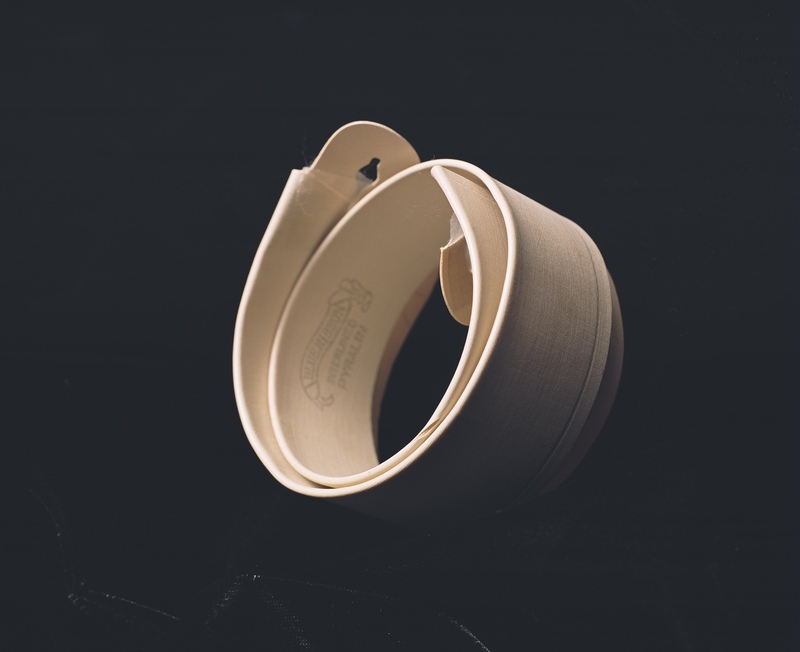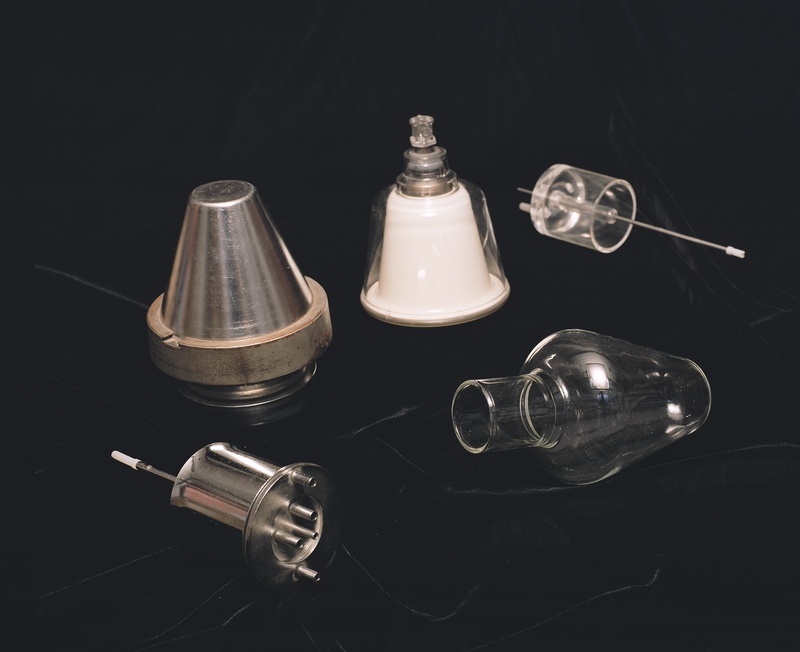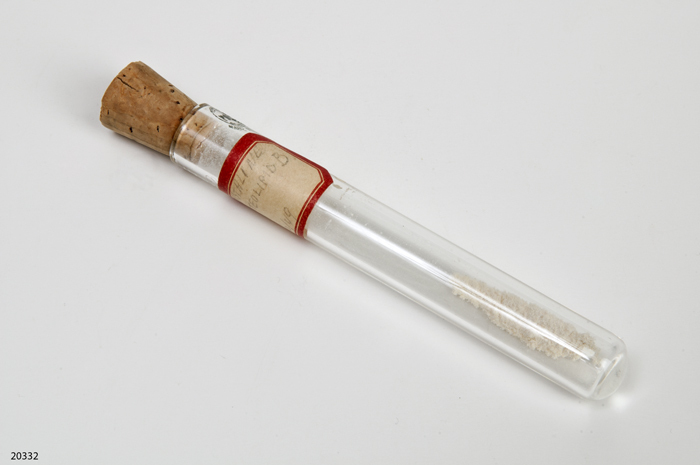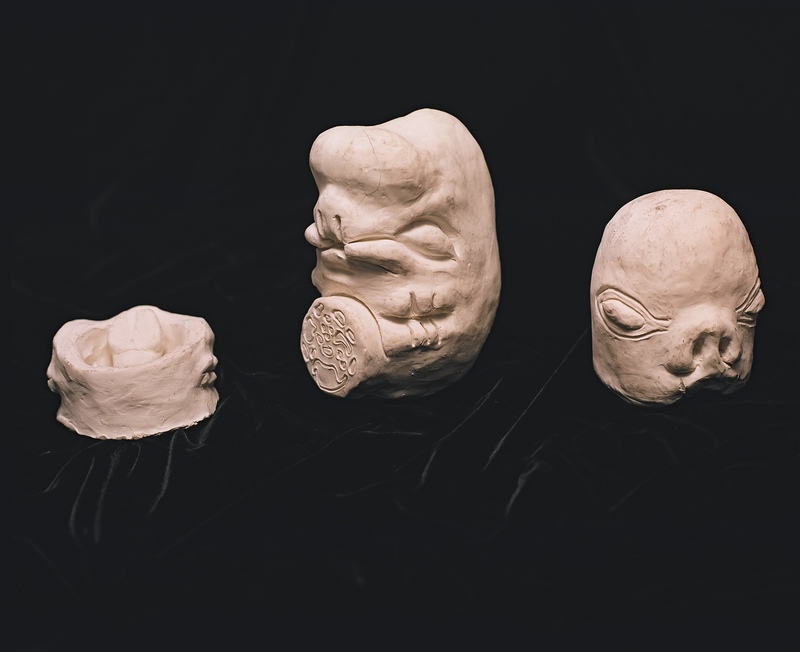Warren Anatomical Museum
This collar was worn by a Boston streetcar motorman who was subject to attacks of dizziness and loss of consciousness on the job. Upon examination at Massachusetts General Hospital, it was determined that when the motorman turned his head, his stiff shirt collar pressed against the right carotid sinus, triggering a fainting attack. "Pulse and blood pressure measurements were made with the patient turning his head from side to side while wearing one of his celluloid collars. These movements caused pressure on the carotid sinuses, and resulted in slight slowing of the heart rate, fall in blood pressure as much as 40mm. Hg systolic, sometimes dizziness, but not fainting. The patient was advised to wear a soft collar, which he has done for the past month. In that time has had no more attacks of dizziness or fainting."
Dr. Soma Weiss (1899-1942) described this case in his article, "Carotid sinus reflex in health and disease," published in Medicine, v. 12 (1933).
After World War II, Harvard researcher Edwin Joseph Cohn (1892-1953) devised a small centrifuge in which a donor's blood could be quickly separated into its components and stored more efficiently. The centrifugal force employed divides the heavier red blood cells from the lighter plasma.
Beginning in October 1948, weekly meetings of the Formed Elements Group of Cohn's laboratory staff and associates were held to discuss research and developments in plasma fractionation and blood preservation and storage. These meetings resulted in the establishment of the Blood Characterization and Preservation Laboratory in January, 1951.
While the first bowls for the Cohn centrifuge were made of glass, the examples here show later refinements, the one made of stainless steel, the other a single use, disposable bowl, developed by Allen D. Latham, Jr.
This Pyrex test tube contains crystalline proteolipid B that HMS Professor of Biological Chemistry Emeritus Marjorie Berman Lees (1923- ) isolated from brain white matter on July 12, 1949, early in her groundbreaking research with Dr. Jordi Folch-Pi (1911-1979) in lipid and protein isolation at the McLean Hospital Research Laboratories.
Folch-Pi and Lees describe the cumbersome process in a 1951 article in the Journal of biological chemistry, “To a filtrate from proteolipide A was added an equal volume of acetone, and, after mixing, the solution was allowed to stand at 4° overnight. A precipitate that had formed was collected by centrifugation and dried in a vacuum desiccator at room temperature to constant weight. 0.6 gm. of a white powder was obtained (proteolipide B).”
During her tenure as an HMS professor and researcher, Elizabeth Dexter Hay (1927-2007) achieved many notable “firsts.” She was the first woman chairperson of a HMS preclinical department when she took the helm of the Department of Anatomy and Cell Biology in 1975. She became the first woman president of the American Society of Cell Biology and the Society for Developmental Biology and was the first woman to receive the Society’s Edwin Grant Conklin Medal in Developmental Biology.
In 1964, Dr. Hay became the first Louise Foote Pfeiffer Professor of Embryology, and it was in this position that she used her collection of plaster, wax, and wood embryological models. Seventeen of these models were uncovered in a storage room at the Medical School in 2008 and were then added to the Elizabeth D. Hay manuscript collection in the Archives for Women in Medicine.
For more on Elizabeth D. Hay, check out Leading by Teaching: Elizabeth D. Hay and Lynne M. Reid.




